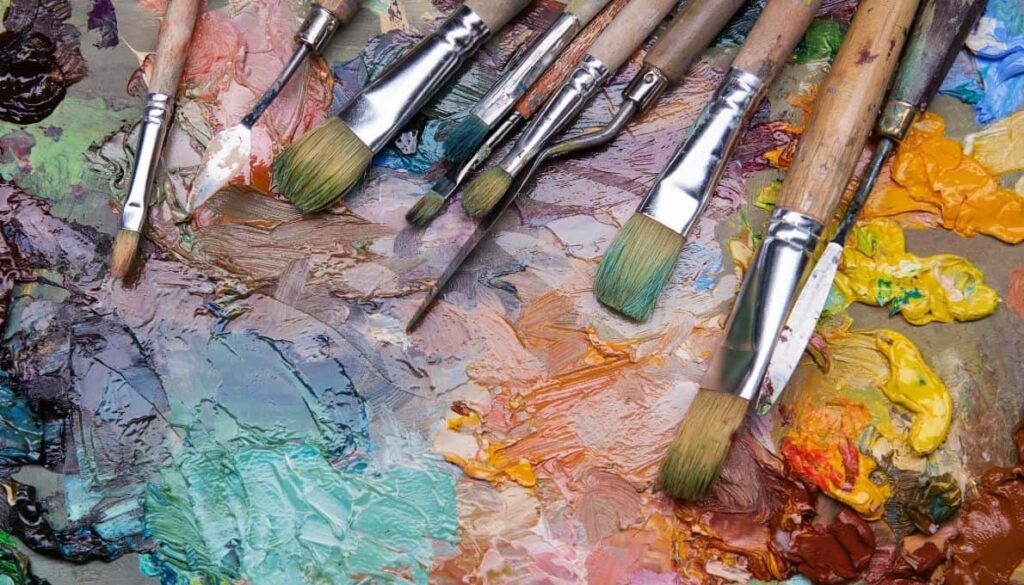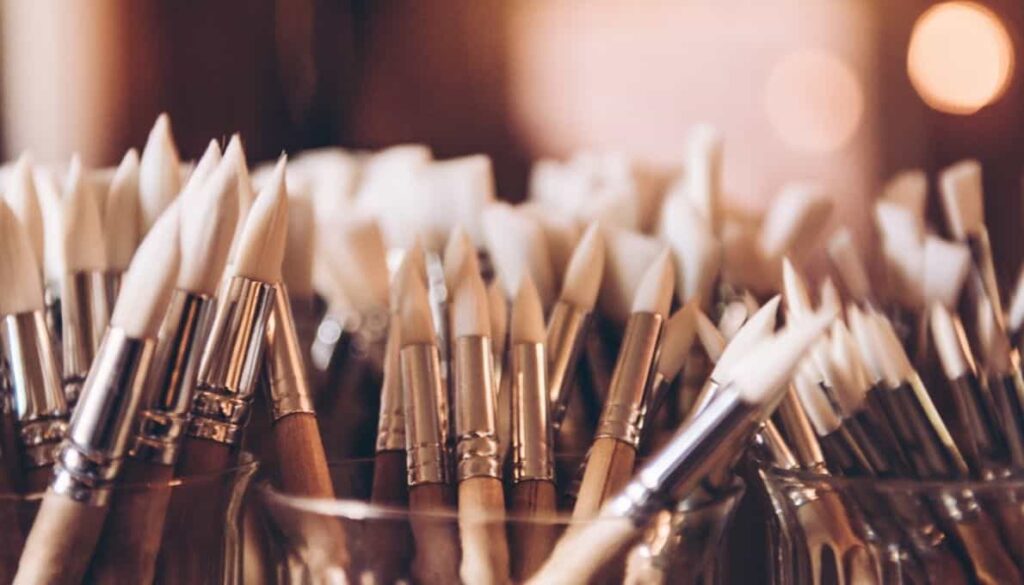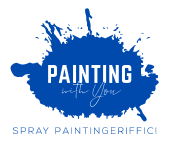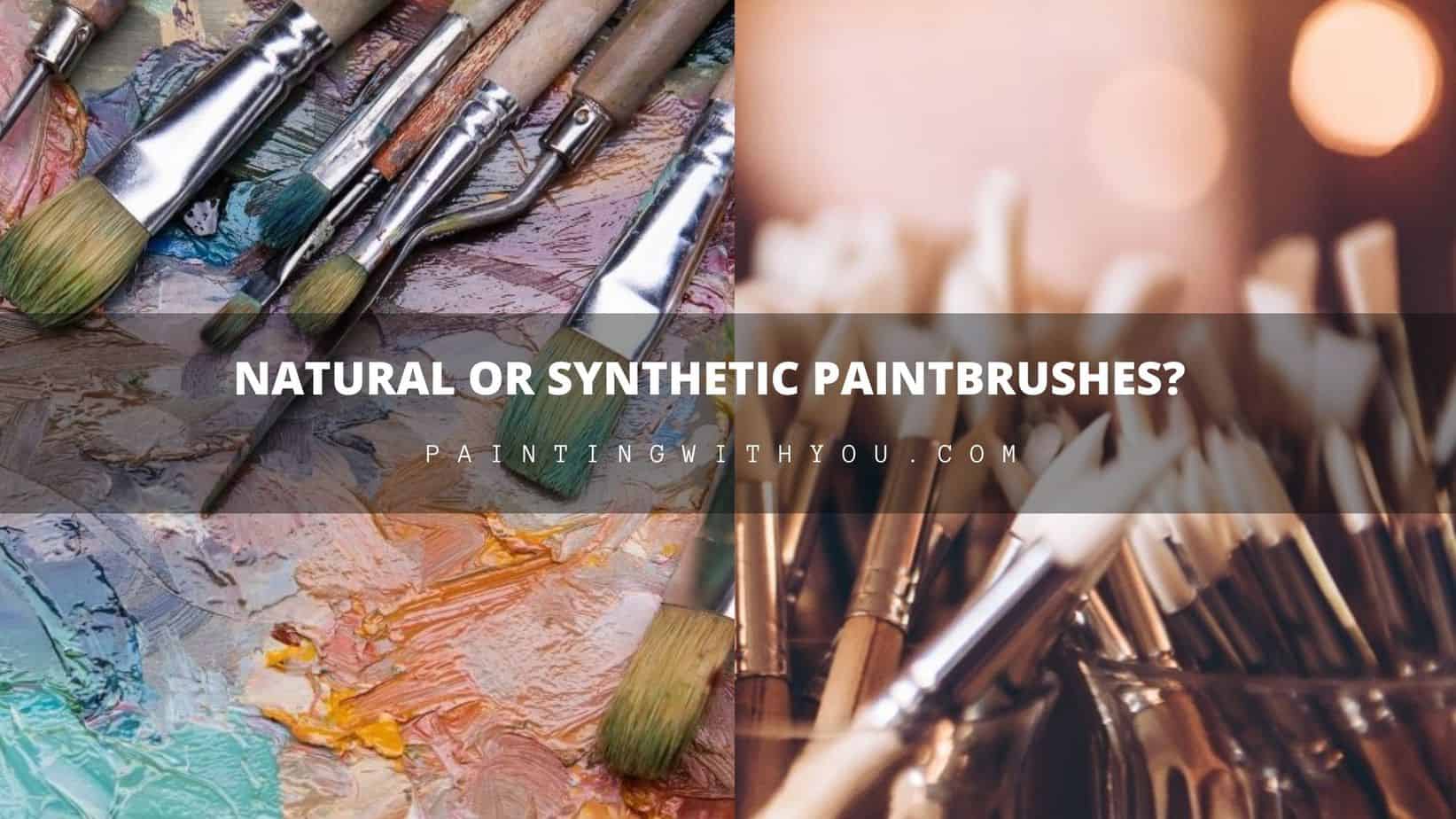Shopping for paintbrushes and overwhelmed by your options? In addition to the various sizes and shapes, you will see natural and synthetic bristle brushes competing for your dollar. It can be easily confusing, especially if you are just starting on a project or passion.
With concern for animal preservation and the development of complex fibers, we now have endless options for paintbrushes, and they have their particular strengths and weaknesses.
Paintbrushes have been carrying color into our daily lives for over six thousand years. From your artistic masterpiece to your latest home update, you want to make an informed decision to get the results you are imagining.

Synthetic paintbrushes
As we look for alternatives to harvesting our goods from animals, synthetic bristle brushes are becoming more popular, more advanced, and more versatile. They are easy to mass produce, driving their cost down significantly, and making them readily available at any hardware or craft store, not to mention your local grocer.
What Are synthetic paintbrushes They Made Of?
Commonly, synthetic bristles are made from polyester, nylon, or a combination of both. They can also be made from lycra, spandex, or rayon. They are made to mimic the properties of natural brushes, and over the years, they have become much better at achieving this goal.
Synthetic fibers are typically translucent-white, but nylon and polyester bristles pick up and hold paint better when they are dyed. You will see them in white, orange, both, or black but can expect the packaging to tell you what the brush is made of.
Each synthetic material has its own benefits:
- Nylon – known for smooth finishes, durability, and great paint pick-up.
- Polyester – known to hold shape well, meaning more control.
- Combination – puts the qualities of both together for a smooth, durable brush that can do just about anything you want it to.
When to use synthetic paintbrushes?
Modern synthetic brushes are made for almost any project. The science behind them advances all the time. They typically hold their shape better and are known to be easy to maintain. They can last you a long time if you take good care of them.
You can even paint on rough surfaces with a synthetic brush, such as brick, cement, and unfinished wood, without causing them noticeable damage.
If you’re new to painting, and/or you are not interested in spending a lot on brushes you are just learning how to use, synthetic is the way to go.
They work with many kinds of products:
- Acrylic paint
- Water-based paint
- Water-based stain
- Watercolor
- Gloss paint
- Latex paint
[amazon bestseller=”synthetic paintbrushes” items=”3″ =”table”]
When NOT To Use Them
There are times synthetic bristles may not meet your needs. If they are exposed to high heat and harsh solvents, they have been known to soften and could potentially “melt” or curl like split ends in your hair. Fast-drying paints also pose a challenge, because they bind to the synthetic fibers and harden the bristles if not properly cleaned.
Nylon brushes, in particular, soften after you have used them in latex paint for a long period of time. They also do not work well with lacquer or shellac. Polyester does not pick up paint as efficiently, meaning you will have to dip these paintbrushes more often.

Natural paintbrushes & What are they Made of?
Natural paintbrushes are made from animal hair. They are the original tools of the trade and some artists still insist there is no substitute for natural bristles. The hair typically comes from hogs, badgers, and sables – an eastern cousin of weasels.
Some brands may also use pony, squirrel, ox, or goat hair. Naturally, there also brushes available that combine different hairs for their unique properties.
Expect natural paintbrushes to be more expensive, because they are (understandably) more costly to make.
Also, note that animal hair brushes will “shed” a few hairs as you just begin to use them. Well-made brushes will stop after the first two or three uses.
When to use natural paintbrushes?
Depending on who you talk to, natural brushes are still the best for everything. However, you may find they are truly best for oil-based paints and watercolor.
The oil in paint will act as a conditioner for the animal hair, making them more pliable with use. Animal hair holds more watercolor paint and distributes the color more evenly, giving the artist more control.
Also works best with:
- Varnishes
- Shellac
- Alkyd Enamels
- Milk-based Paint
- Clay-based Paint
- Shellac-based Primer
- Oil-based Stains
- Polyurethane
[amazon bestseller=”natural paintbrushes” items=”3″ template=”table”]
Any painting or project where brushstrokes are the goal – natural brushes are sure to please. However, natural brushes are reputed to apply a smoother finish, not leaving big streaks behind even when you are painting with watercolors or oil-based paints.
When NOT To Use Them
Natural hair brushes are a little more finicky than their synthetic counterparts. They are damaged by acrylic paints, and they will break down when used on any rough surfaces.
Water-based paints are not usually compatible with animal hair, as it may absorb the water. This also makes them a little more difficult to keep clean, as you don’t want to soak them like you can with synthetic bristles.
Natural or Synthetic Paintbrushes?
When it comes to choosing between natural and synthetic brushes, it really comes down to your needs and preferences, as most things do. You can accurately expect to get what you pay for when it comes to paintbrushes, though, whichever material you choose.
- If you paint with a lot of oil-based paints, you are willing to pay for the quality, and you have no issue with animals getting haircuts, natural brushes truly cannot be duplicated. They have superior paint pick-up, meaning you dip your brush in the paint less frequently.
- Synthetic brushes on the other hand, are the best choice for anyone just getting started in painting, or if you paint mostly with water-based or acrylic paints. They are also easier on a budget. Modern fast-drying paints may pose a challenge to their upkeep, but they are inexpensive to replace.
Related Questions
Using synthetic brushes in milk or chalk-based paints will result in brushstroke marks, unless you are determined to put a little extra work into making your finish smooth.
Synthetic bristles maintain their shape better over time, making them ideal for fine details. Natural hair brushes split with use, so they spread more color, but are not especially precise.
If the packaging allows, brush the back of your hand to determine softness, spring, and how well the brush holds shape.

